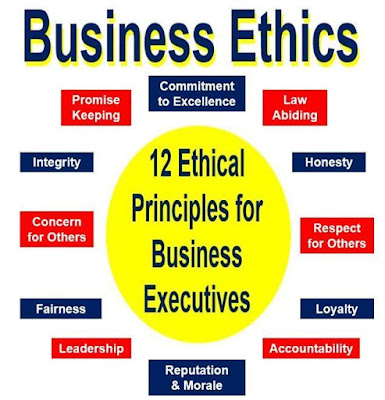What Is the Business of Business?
What Is the Business of Business?
Abstract
This paper develops a simple framework for understanding the emergence of new organizational forms, such as socially responsible firms and social entrepreneurs, that embody the private sector’s efforts to resolve problems that typically have been within the purview of government and traditional public charities. We consider organizations that can generate both financial and social returns. Differences in the technologies between the for-profit sector and the social sector give rise to comparative advantages and play a key part in the analysis. This allows us to analyze the conditions under which hybrid organizations emerge in place of traditional charities and profit-maximizers.
I. Introduction
In 1970, Milton Friedman famously argued that the only social responsibility of business was to maximize profits (Friedman 1970). These profits, if only returned to the firm’s owners (the shareholders, on whose behalf the management should rightfully act), could be put to charitable purposes as shareholders saw fit. By essentially delegating the task of collecting and disbursing taxes to corporate managers, in Friedman’s analysis, shareholders allowed themselves to unwittingly become pawns in a larger battle to derail the capitalist system. Levitt (1958) captured this perspective succinctly when he wrote, “the business of business is profits.”
In the almost half century since Friedman’s admonition, business has evolved along a trajectory quite contrary to what he advocated. It seems as if the business of business is more than just business: socially responsible businesses, which pursue hybrid goals of social good and financial gain, are commonplace. Today it is standard to see for-profit businesses pursuing double-bottom-line objectives. At the same time, Dees (1998) notes that nonprofits are increasingly adopting business methods, writing, “Faced with rising costs, more competition for fewer donations and grants, and increased rivalry from for-profit companies entering the social sector, nonprofits are turning to the for-profit world to leverage or replace their traditional sources of funding.” Why has this occurred? Why have the lines between business and charity become so blurred?
One prominent view for why this has occurred is captured succinctly by Benabou and Tirole (2010) when they note that, “Society’s demands for individual and corporate social responsibility as an alternative response to market and distributive failures are becoming increasingly prominent” (emphasis added). This is the view that increasing awareness of the social cost of consumer goods, coupled with the difficulty government actors face when attempting to regulate across global supply chains or otherwise seek redistributive solutions, has driven the rise in corporate social responsibility (CSR).
The central goal of this paper is to put forward a different argument, one that centers on the importance of innovation in business practice. Our argument is that business-model innovations from both charities and for-profit firms give these new hybrid firms a comparative advantage over traditional organizations in delivering what other nonmarket actors provide. The analysis we provide makes it clear that if we were simply living through a period of evolving preferences for financial and social returns, we would see increases in pure charity, not changes in business practice. In short, our analysis argues that the emergence of socially minded business activity must be the result of technological changes on the supply side, rather than the result of demand-side changes in investor or consumer preferences.
But before we dive too far into our analysis, we should take a step back. Clearly, some aspects of so-called social responsibility need no special explanation. For instance, hotels frequently encourage guests to hang their towels to be reused rather than washed each day. While this is often promoted as environmental stewardship, it can be just as easily understood as an attempt to lower the hotel’s operating costs.
While business activities like this are simply alternative strategies for profit maximization, there are many examples of firms that either sacrifice profits by operating in a manner that involves stricter environmental or social guidelines than they are required by law, or that take a share of their profits and donate them to causes that could easily be supported by the firm’s shareholders directly. Ben & Jerry’s ice cream and Patagonia are two corporations that have historically stressed environmental stewardship, the latter famous for an advertising campaign admonishing their customers not to buy new Patagonia jackets when the old ones still had use. The Body Shop, a beauty products manufacturer and retailer, works to end animal testing of cosmetics, and in so doing presumably embraces higher production costs than they might otherwise face. Tyson Foods provides grants to organizations that abate child hunger. Molson Coors invests in education to promote responsible drinking behavior. Many law firms and consulting firms encourage their employees to offer their time on a pro bono basis to important causes in their community. Of course, any of these strategies can be viewed cynically as a marketing ploy, and indeed many observers tout these firms as providing examples of successful CSR strategies precisely because their CSR strategies align well with their core corporate mission. But the fact remains, as Friedman pointed out, that consumers and investors could carry out these charitable acts on their own account. Moreover, as we discuss in section II, the evidence is far from persuasive that firms are acting in their shareholders’ best interests by engaging in these activities. Why, then, do firms behave this way? Or put differently, how does this behavior survive the forces of competition in the market?
At the same time, many organizations that would traditionally be labeled as “nonprofits” adopt a hybrid approach that blends the pursuit of profit with charitable purpose. Take the example of VisionSpring, an organization that promotes vision correction in the developing world by distributing eyeglasses. While they rely on a combination of philanthropic support as well as strategic partnerships with eyeglass retailers like Warby Parker, they also distribute eyeglasses at a profit through a variety of channels. One is a model in which local merchants who have been trained to diagnose and correct simple vision problems sell glasses at a modest profit in the communities in which they live. Another is retail outlets in local clinics and hospitals. Why do they blend the pursuit of profit with charitable purpose instead of operating like a pure charity?
One reason these questions persist is that we lack a widely accepted framework for thinking about mixing charity and business. Thus, to explore these questions, this paper develops a simple graphical framework for understanding the emergence of new organizational forms that blend profit and stewardship. For us, Friedman’s analysis is not just a convenient rhetorical straw man: the intuition that we develop hinges critically on a central theme in Friedman’s analysis, which is that idea that investors always have the ability to take “ill-gotten” profits and put them to work for social aims of their own desire. Put differently, Friedman’s central observation is that we do not need to delegate the task of impact investing to either a firm or an intermediary—any of us can act as an impact investor by taking returns we have earned and directing them toward charities of our own choosing. This observation is the fundamental building block of a simple framework for how to think about the emergence of socially conscious business activity.
We start by assuming that investors have preferences over financial returns as well as social returns. That is, investors not only want to invest in profit-making enterprises, but they also place monetary value on social goods such as increased literacy in a developing country or better environmental stewardship. While many environmental, social, or governance objectives (a clean environment, good working conditions, etc.) have the flavor of public goods, nothing in our analysis hinges on the existence of externalities. In other words, we do not assume that markets are broken in order to create a motivation for CSR.
We assume that for-profit corporations can choose to operate in a socially minded fashion in addition to simply maximizing profits, and that charities can make operational choices that sacrifice charitable output to stave off financial losses. Because we are concerned with understanding the trade-offs between social and financial output, we assume that all win-win opportunities, such as hotels “going green” by encouraging guests to hang up their towels, have already been exhausted. Instead, we focus only on situations in which achieving social goals comes at the expense of profits.
This framework allows us to explore the interplay between for-profit corporations that can engage in CSR, charities that can incorporate profit motives into their operations, and investors who allocate resources between profit making and charity. The mechanics of our framework are exactly what Friedman imagined: investors can choose to allocate their own wealth between social and financial returns, and therefore do not necessarily need corporations to act charitably. The question we ask is whether, and under what conditions, investors will ask corporations to operate with an eye toward social good even though these same investors are perfectly capable of acting charitably on their own account. In other words, we ask “What is the business of business?”
The key insight of our analysis is that the optimality of Friedman’s prescription hinges critically on the relative trade-offs that investors and organizations face when they substitute between charity and profit. By relative, we refer to the fact that businesses, charities, and investors each have the ability to make trade-offs between financial and social output; to maximize overall output, the trade-off should therefore be left to the set of actors who do it most efficiently. The fact that shareholders can take profits and redistribute them to pure charities does not necessarily compel organizations to avoid a dual purpose; instead, it imposes constraints on them by establishing a minimum level above which organizations must trade off social and financial output. When the trade-off between social and financial returns is sufficiently favorable inside for-profit corporations, competition for investment dollars requires for-profit corporations to produce below the maximal level of financial return and instead produce a blend of social and financial returns. In our analysis, this corresponds to the emergence of corporate social responsibility. Similarly, when the trade-off is sufficiently favorable inside charities, they are optimally required to pursue twin goals of social and financial return. This corresponds to the emergence of social entrepreneurship.
When the trade-offs between social and financial returns are sufficiently weak within both the corporate and the social sectors, investors drive the provision of social goods by allocating wealth between two extreme technologies: a pure charity and a pure profit-maximizing technology. This describes exactly the situation prescribed by Milton Friedman and Theodore Levitt in their admonition against corporate social responsibility. However, whenever the trade-offs between social and financial returns inside both types of organizations are favorable, this investment rule is no longer optimal and investors will allocate their capital between a socially responsible profit-making firm and a “financially savvy” charity.
Although our analysis is intentionally stark, it sharpens our understanding of several open questions in this area. First, whether investors push firms to be “pure-play” profit maximizers or socially minded hybrid businesses depends not on society’s preferences over the amount of social and financial profit that holds in the aggregate, but rather in the technological implications of the business models that organizations operate. The flip side of this observation is that business-model innovations that have the potential to be more CSR-friendly need not result in more social output in the aggregate, just better trade-offs.
Our analysis also offers a guide for thinking about which types of CSR activities firms should engage in. Here, the logic is simple. For CSR to survive the forces of competition, it is not necessary that CSR increases a firm’s bottom line, but it must be the case that the organization can exploit opportunities that its investors cannot. This would be the case, for example, if information asymmetries created complementarities between financial and social returns that were visible to the corporate manager but not to outsiders. This naturally suggests that firms should engage in CSR programs that involve the highest degree of complementarity with their core business.
A number of other academic studies also work to develop frameworks for thinking about trade-offs between alternative mechanisms for providing socially valuable goods. Kotchen (2006) develops a general model of private provision of a public good where investors have preferences over social welfare and private consumption and maximize utility by allocating wealth across three investment opportunities: a pure private good (e.g., coffee), a pure public good (e.g., environmental quality), and a hybrid “green” good (an example might be environmentally friendly, shade-grown coffee). His model shows that green goods can either increase or decrease private provision of the associated environmental public good, depending heavily on whether the public good is a complement to or substitute for private consumption. Small and Graff Zivin (2005) and Baron (2007) also develop models in which investors can give directly to charities or invest in firms that engage in CSR and focus on the degree to which one activity crowds out another.
The remainder of the paper is organized as follows. To set the stage for our theoretical discussion, we begin in Section II with a brief overview of the evidence linking CSR and value creation. We lay out the basics of our framework in Section III, and provide an analysis in section IV. Section V discusses some potential shortcomings and challenges that our framework must confront, while Section VI explores implications for innovation policy at various levels. Section VII concludes.




Nhận xét
Đăng nhận xét